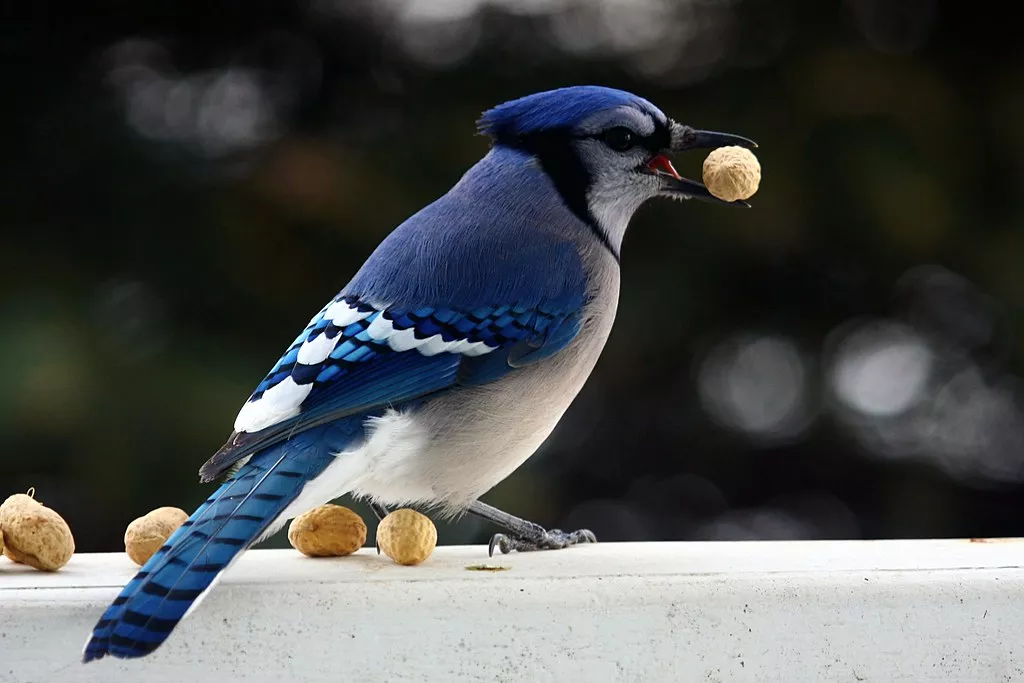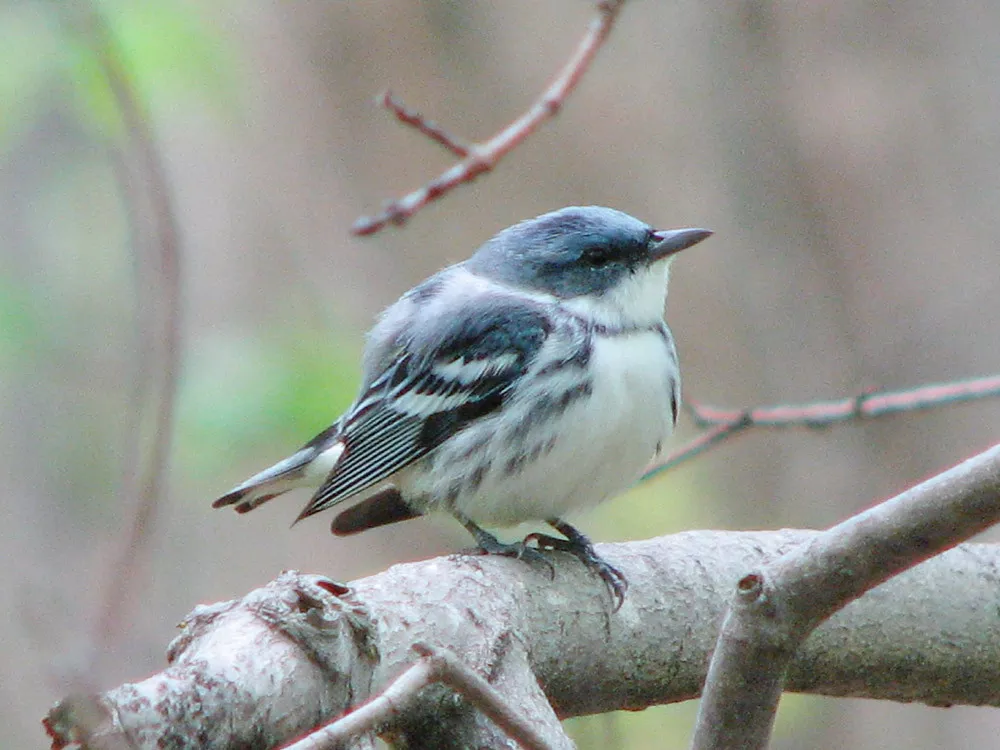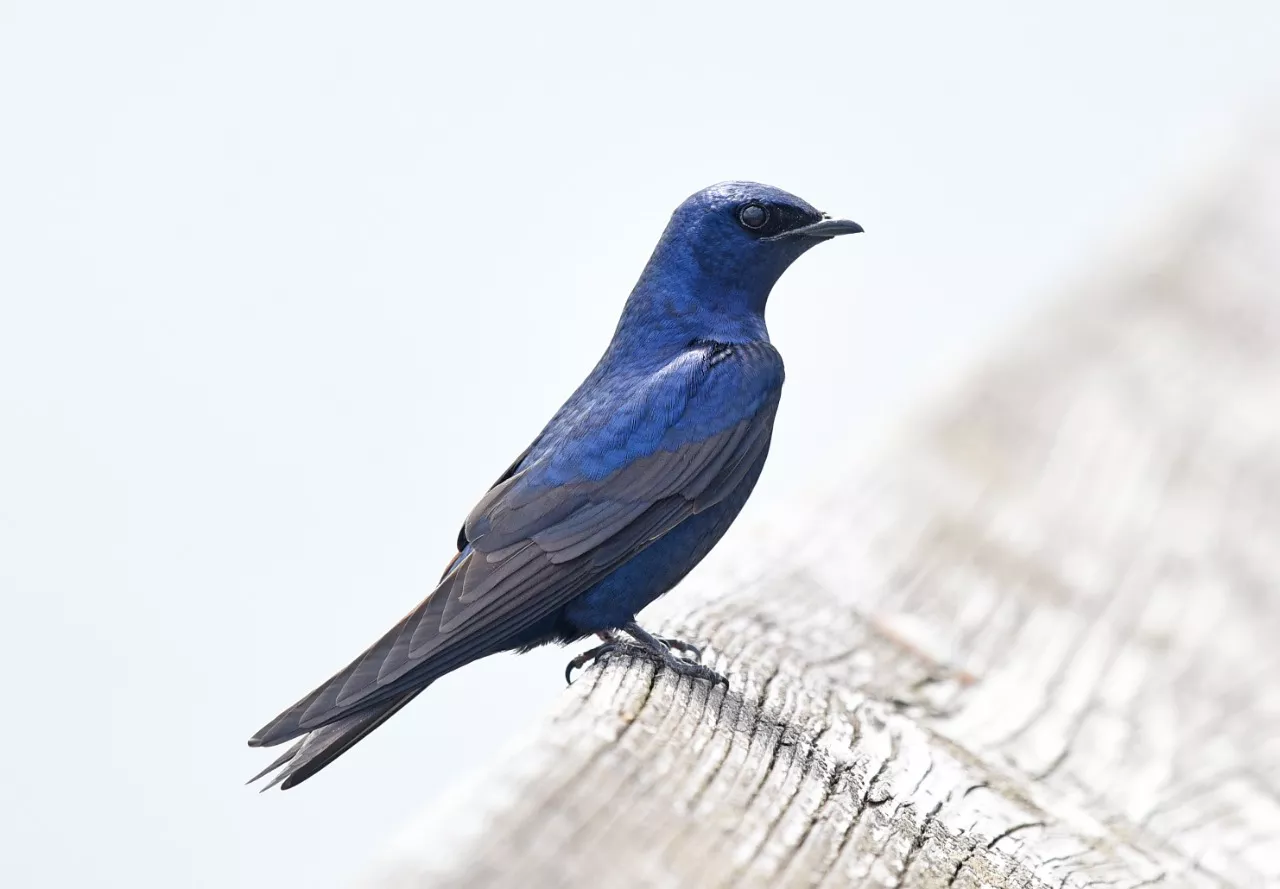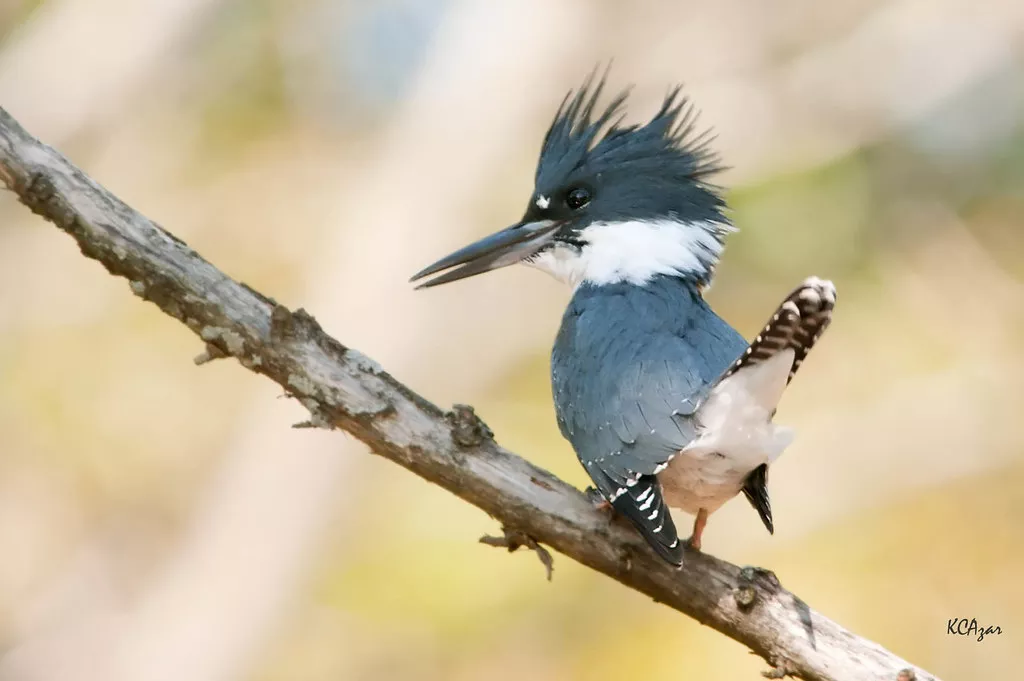Illinois is home to many bird species, but few are as striking and charismatic as the bluebirds. With their vibrant blue feathers and cheerful songs, these birds are a joy to behold. Bluebirds are a symbol of happiness and hope, and they have captured the hearts of birdwatchers and nature lovers alike. In this blog post, we’ll take a closer look at the different types of bluebirds found in Illinois, their habitat, behavior, and conservation status. Whether you’re a seasoned birder or just starting, you’ll be sure to appreciate the beauty and wonder of these gorgeous birds. So, grab your binoculars, and let’s dive into the world of bluebirds in Illinois!
List of Bluebirds in Illionus
While many of these Bluebirds live in Illionus all year round, some only visit during the summer or winter season. This guide will also show the frequency of these birds based on the checklists submitted by birdwatchers of Illionus on ebird. Let’s now delve into the specifics and examine each of these species in more depth to learn all there is to know:
1. Eastern Bluebird
Eastern Bluebirds can be easily found across Illinois as they are a common and widely distributed breeding bird in the state.
They are present throughout Illinois during migration and the summer season, and they can be commonly seen in southern Illinois during winter. While they used to be abundant across all areas of Illinois, they are now predominantly found in rural regions. You can spot them in various habitats such as pastures, open woodlands, orchards, and along roadsides.
Frequency in Florida: Eastern Bluebirds have been reported 12% on Summer checklists and 5% on winter checklists by Birdswatchers of Florida.

- Scientific name: Sialia sialis
- Lifespan: 6 to 10 years
- Size: 6.3–8.3 in
- Native to: eastern North America and south as far as Nicaragua
Male Eastern Bluebirds have beautiful shades of admiral blue on their top portions. These birds’ wings, tails, and back heads are all painted a bright shade of blue.
Males seem to be wearing a hat because of their partially orange collars. Bluebird males have distinct orange breasts with warm rufous brown tones.
Adult females have more grayish-brown coloring on their top portions. But females also have a rufous-orange chest and flanks, blue tail feathers, and blue wing feathers.
Although it migrates in the northern half of its habitat, it is a year-round resident in the southern United States. In Mexico, people from the north spend the winter.
The Eastern Bluebird competes with House Sparrows and European Starlings for nesting locations and builds its homes in holes.
They travel in flocks during the autumn migration and like eating fruits and berries.
Due to a scarcity of nesting cavities and competition from European Starlings, the population of Eastern Bluebirds saw a sharp fall near the end of the 20th century.
But these lovely birds are once again a regular sight owing in large part to the efforts of several Illinois residents who provided nest boxes for Eastern Bluebirds.
2. Indigo Bunting
Indigo Buntings are often seen at the edges of forests, gardens, and parks in Illinois.
They are known to visit bird feeders that provide seeds, making them a delight for bird enthusiasts. Indigo Buntings are migratory birds, and they can be found in Illinois only during the summer season. During the winter, they migrate to Central and South America in small flocks as part of their fall migration.
Frequency in Florida: Indigo Buntings have been reported 32% on Summer checklists and 0% on winter checklists by Birdswatchers of Florida.

- Scientific name: Passerina cyanea
- Lifespan: 10 years
- Size: 5-inch
- Native to: Southern Canada to northern Florida during the breeding season, and from southern Florida to northern South America during the winter.
The Indigo Bunting is a tiny bird with vivid colors. The male is nearly totally azure blue in the summer, with the exception of somewhat darker brownish wingtips and tail feathers.
Inconspicuous females and young birds have light brown upper parts and creamy white underparts.
The Indigo Bunting is a very common bird in Illinois, and it often visits seed-filled bird feeders in parks, gardens, and woodland borders.
Illinois only has one bird that is totally blue.
Since it transitions from eating seeds to mostly eating insects in the summer, this bluebird is most often seen at bird feeders in the spring.
Males often sing when perched in trees during the breeding season.
3. Blue Jay (Crested bluebird in Illinois)
Blue Jays are a widespread and common bird species found throughout Illinois. They are permanent residents in the state but also do migration.
They are easily recognizable with their vibrant blue feathers on the back, marked with black patterns. The Blue Jays also have a distinct white belly and a striking blue crest on top of their heads. Their wings display a combination of blue, black, and white bars, while a collar of black feathers adorns their necks.
Frequency in Illinois: Blue Jays have been reported as 38% on Summer checklists and 35% on winter checklists by Birdswatchers of Illinois.

- Scientific name: Cyanocitta cristata
- Lifespan: about 7 years
- Size: 9 and 12 inches
- Native to: North America
These medium-sized blue birds have brilliant arctic blue wings and tail feathers and are greyish blue on top. They have light grey underparts.
Blue Jays are sociable birds that live in tiny communities known as colonies, each of which has a dominant couple and a number of subordinate individuals.
Male birds in positions of dominance aggressively drive away subordinates while defending their territory from invaders. Young birds and inferior females are tolerated but not safeguarded.
This is Illinois’ most prevalent blue bird.
These birds pounce on food opportunities. In addition to eating carrion, fruit, insects, and small vertebrates, they often steal food from other animals.
Insects make up the majority of their food throughout the summer. Sometimes they capture insects in flight, while other times they use a variety of methods to collect insects on the ground.
These blue-colored birds often forage on man-made objects including buildings, bridges, and telephone poles.
Jays often race along trees or wires while on the prowl for food before swooping down to seize prey.
Although part-migratory, blue jays spend the whole year in Illinois. They may travel during the colder months to places where there is greater availability of food.
Offering peanuts or sunflower seeds to Blue Jays can help them come to your bird feeder.
4. Barn Swallow
Nearly all of North America south of the Arctic Circle is home to the barn swallow, which may be found in a broad range of environments. It is a migratory bird that visits Central and Southern America during the winter.
Frequency in Illinois: Barn Swallows have been reported as 38% on Summer checklists and 0% on winter checklists by Birdswatchers of Illinois.

- Scientific name: Hirundo rustica
- Lifespan: about 4 years
- Size: 14.6 to 19.9 cm
- Native to: Europe, Asia, Africa, and America
It features iridescent blue upper parts that, when exposed to sunlight, glitter in a range of dark blue hues.
Its belly is light reddish-orange, with a chestnut orange forehead and neck and a reddish-orange underside.
Another excellent characteristic of the Barn Swallow that you may use to recognize this bird is its highly forked tail.
However, be aware that young barn swallows have duller plumage than adults and a shorter, less forked tail.
The Barn Swallow used to nest in hollow trees and caves but now prefers to do so within barns and under the overhangs of buildings and bridges (which explains how it got its name).
In most locations, these Illinois swallows are still a very frequent sight. However, Barn Swallow populations have generally been declining, particularly in the northern part of their territory.
This fall is probably brought on by the reduction in breeding and foraging locations.
The Barn Swallow is a kind of swallow that feeds on flying insects like mosquitoes and flies, catching them closer to the ground than other swallow species. It consumes termites while residing in its winter habitat.
5. Black-throated Blue Warbler
Early records of Black-throated Blue Warblers in Illinois exist, but they are not common in the state
Frequency in Illinois: Black-throated Blue Warblers have been reported as 2% on Summer checklists and 0% on winter checklists by Birdswatchers of Illinois.

- Scientific name: Setophaga caerulescens
- Lifespan: about 8 years to 10 years
- Size: 5-inch
- Native to: the northeastern United States and southeastern Canada
The Black-throated Blue Warbler’s male and female counterparts have strikingly different plumages.
Adult males have predominantly dark blue upperparts throughout the summer, black wings, and a white spot at the base of their primary feathers.
The line of black feathers that separates the white underparts from the blue top parts is clearly visible.
Females and young birds, in contrast, have a greyish-green top and a light yellow bottom.
The Black-throated Blue Warbler may be seen breeding in the northern and central parts of North America from May through August.
It is a bird that strictly migrates, and it spends most of its time in the Caribbean.
Most of the year, these warblers eat insects, but in the autumn, they also eat berries.
6. Blue-gray Gnatcatcher
The Blue-gray Gnatcatcher is a seasonal migrant and can only be seen in summer in Illinois. They spend the winter in the southern United States and Central America.
Frequency in Illinois: Blue-gray Gnatcatchers have been reported as 15% on Summer checklists and 0% on winter checklists by Birdswatchers of Illinois.

- Scientific name: Polioptila caerulea
- Lifespan: 3-4 years
- Size: 3.9–5.1 in
- Native to: North America
With the exception of its long tail, the Blue-gray Gnatcatcher resembles a warbler quite a little.
Male mature birds have lighter grey underparts and blue-gray top parts. A white stripe may be seen at the edges of the black tail.
Female adult birds have ray-like upper parts and light grey underparts. Both sexes’ eyes have white eyering.
In the temperate parts of North America, the Blue-gray Gnatcatcher breeds, mostly from the beginning of May to the end of August.
It is a seasonal migrant, with year-round inhabitants in the southeastern populations. But many from the north spend the winter in the southern United States and Central America.
The long tail of this bird, which is often tilted upward, is an excellent way to recognize it.
7. Cerulean Warbler (Small bluebirds in Illinois)
Cerulean Warblers are migratory birds that undertake long-distance journeys. They breed in hardwood forests in eastern North America. During the non-breeding season, they migrate to the eastern slope of the Andes in South America, where they prefer subtropical forests as their wintering grounds.
In the past, Cerulean Warblers were once abundant in regions as far south as Alabama and Mississippi. However, the loss of suitable habitat in these southern areas has led to a shift in their breeding range towards the north. In Illinois, they are considered rare visitors during migration and breeding season.
Frequency in Illinois: Cerulean Warblers have been reported as less than 1% on Summer checklists and 0% on winter checklists by Birdswatchers of Illinois.

- Scientific name: Setophaga cerulea
- Lifespan: 6 years
- Size: 4.5 in
- Native to: Eastern North American
Cerulean Warbler is one of the smallest bluebirds in our list of bluebirds in Illinois. It has been progressively losing population over the years, and as a result, they are now considered to be endangered.
Male mature birds have mostly white underparts and baby blue upperparts.
Numerous black stripes decorate the sides, and the secondaries of the wings feature two white wing bars.
Although the sexes similarly resemble each other, a mature female’s blue feathers are replaced with a greenish color in contrast to the male.
In southern Illinois, the Cerulean Warbler is a rare breeding bird that migrates to South America for the winter.
Due to habitat degradation, its population has been progressively falling, necessitating severe conservation measures.
8. Tree Swallow
Tree Swallows in Illinois are frequently seen around lakes, marshes, and ponds and perching on nest boxes placed alongside roads. These small and agile birds have a habit of using these artificial structures as perches and nesting sites, providing observers with the opportunity to spot them easily along the roadside.
Tree swallows spend the winter in Central America and the region around the Gulf of Mexico.
Frequency in Illinois: Tree Swallows have been reported 25% on Summer checklists and 0% on winter checklists by Birdswatchers of Illinois.

- Scientific name: Tachycineta bicolor
- Lifespan: 5 years
- Size: 14 cm
- Native to: North America
On top, adult Tree Swallows are greenish blue, while their underparts are buff white. They have iridescent feathers that change color when exposed to sunshine.
Young birds are more greyish brown with a white underbelly, whereas mature females and adult males resemble each other in appearance.
You have the chance to entice this lovely blue-colored bird into your garden since it quickly accepts adequate nesting boxes.
This blue bird is a long-distance migratory that only spends the summer in Illinois because it only eats insects that it captures in the air.
Tree swallows spend the winter in Central America and the region around the Gulf of Mexico.
9. Purple Martin
The biggest martin in North America is the purple martin. The male has an iridescent shine and is nearly totally a dark purple-blue color. Black makes up the tail and wings. Purple martins are only found in summer in Illinois. They migrate to South America in winter.
Frequency in Illinois: Purple Martins have been reported as 10% on Summer checklists and 0% on winter checklists by Birdswatchers of Illinois.

- Scientific name: Progne subis
- Lifespan: about 5 to 7 years
- Size: 7-inch
- Native to: eastern North America
Females and young birds have beige-white underparts with light grey tops. Only the male Purple Martin of all the martin species lacks a belly that is bright in color.
These blue-colored birds have turned to adopt artificial nesting places after historically building their nests in tree holes.
The Purple Martin like to build colonies of hundreds of pairs of nesting birds for its homes. It mostly eats dragonflies and is a good airborne predator.
The Purple Martin sips while flying by skimming the surface of a body of water, much like other species of swallows.
This species of bluebird only migrates, and it spends the winter in South America. In the autumn, it gathers in large roosts that all fly south together.
Installing a Purple Martin home in your garden and playing the Purple Martin sound are the finest ways to attract these beautiful bluebirds to your yard.
10. Belted Kingfisher
The Belted Kingfisher is a large, conspicuous water kingfisher native to North America. It is found near open waters throughout the years in Illinois.
Frequency in Illinois: Belted Kingfishers have been reported at 8% on checklists by Birdswatchers of Illinois.

- Scientific name: Ardea alba
- Lifespan: 15 years
- Size: 3 feet
- Native to: Asia, Africa, the Americas, and southern Europe
Due to its greyish blue upperside, the Belted Kingfisher superficially resembles a Blue Jay.
On the other hand, the Belted Kingfisher is darker than a Jay and is more often seen near bodies of water.
Almost the whole top of an adult male Belted Kingfisher is teal blue, with the exception of a white collar that divides the cap from the body.
They also have a white belly and a greyish-blue breast band. The rufous orange flanks set females apart from males.
The Belted Kingfisher loves areas that are close to lakes and rivers, where it fishes by plunging into the water headfirst.
As long as there is open water where it may fish, this somewhat migratory blue bird can be observed throughout the year in Illinois.
The Belted Kingfisher migrates to the southern regions of the US during the hard winters.
This bluebird seldom ventures too far from water since it almost exclusively eats little fish.
11. Great Blue Heron (Large bluebirds in Illinois)
The Great Blue Heron is the largest heron species found in North America. It is the most widespread Heron in Illinois. It possesses long legs, a graceful, curving neck, and a sturdy bill that resembles a dagger. The bird’s head, chest, and wing feathers create a shaggy appearance. When in flight, the Great Blue Heron elegantly coils its neck into a tight “S” shape, displaying broad and rounded wings, with its legs extending far beyond its tail.
Frequency in Illinois: Great Blue Herons have been reported 28% on Summer checklists and 7% on winter checklists by Birdswatchers of Illinois.

- Scientific name: Megaceryle alcyon
- Lifespan: Around 14 years
- Size: 11-14 inches
- Native to: North America
The wingspan of this heron, a very huge blue bird, may reach six feet. With the exception of a white neck and eye stripe and dark grey wing feathers, it is nearly totally blue-grey.
This huge bird from Illinois enjoys wading in the shallows of lakes, marshes, and ponds to search for little fish.
It carefully awaits a fish of the right size to get near enough to be snatched up by its long, yellow beak.
Additionally, this bluebird forages in grasslands and meadows, stalking rodents there. It is a non-migratory bird that spends the whole year in Illinois.
It will, however, fly to southern states if the winter is really severe and needs open water to catch fish.
Places for Birdwatching in Illinois
Montrose Point Bird Sanctuary:

Located in Lincoln Park, Chicago, Montrose Point Bird Sanctuary is a top hotspot for birdwatching in Illinois. It is home to a variety of bird species, including warblers, thrushes, sparrows, and waterfowl. The sanctuary features a beach and a dock restaurant to the north, making it a great place to enjoy both birdwatching and beach activities. Visitors can access the sanctuary from the main entrance on West Montrose Harbor Drive. The best time to visit is during spring and fall migration.
Illinois Beach State Park:
Illinois Beach State Park is a great place for birdwatching, with possible sightings of passerines, lakefront birds, migrating raptors, sparrows, gulls, terns, and shorebirds. The park has two units, North and South, and offers both land and beach birding. Visitors can hike through oak woodlands, grassy and wooded sand dunes, and long sandy beaches. The park is located in Zion, Illinois.
Carlyle Lake:
Carlyle Lake is another great place for birdwatching, with a variety of bird species to be seen. The lake is located in Clinton County and offers both land and water birding. Visitors can hike through forests, grasslands, and wetlands, and enjoy boating and fishing activities.
War Bluff Valley Sanctuary:
The largest Illinois Audubon sanctuary, War Bluff Valley Sanctuary, is located in southeastern Illinois. It is home to a variety of bird species, including bald eagles, ospreys, and sandhill cranes. The sanctuary features hiking trails and offers both land and water birding.
Almond Marsh:
Almond Marsh is located in Lake County, Illinois, and is a great place for birdwatching. It is home to a variety of bird species, including great blue herons, sandhill cranes, and wood ducks. The marsh features hiking trails and boardwalks, making it easy to explore.
Chicago Botanic Garden:
The Chicago Botanic Garden is located in Glencoe, Illinois, and is a great place for birdwatching. It is home to a variety of bird species, including woodpeckers, warblers, and waterfowl. The garden features hiking trails and offers both land and water birding.
Whalon Lake Forest Preserve:
Whalon Lake Forest Preserve is located in Will County, Illinois, and is a great place for birdwatching. It is home to a variety of bird species, including bald eagles, ospreys, and sandhill cranes. The preserve features hiking trails and offers both land and water birding.
Santa Fe Bottoms:
Santa Fe Bottoms is located in Macon County, Illinois, and is a great place for birdwatching. It is home to a variety of bird species, including woodpeckers, warblers, and waterfowl. The bottoms feature hiking trails and offer both land and water birding.
Glacial Park Conservation Area:
Glacial Park Conservation Area is located in McHenry County, Illinois, and is a great place for birdwatching. It is home to a variety of bird species, including bald eagles, sandhill cranes, and wood ducks. The park features hiking trails and offers both land and water birding.
Perry Farm Park:
Perry Farm Park is located in Kankakee County, Illinois, and is a great place for birdwatching. It is home to a variety of bird species, including woodpeckers, warblers, and waterfowl. The park features hiking trails and offers both land and water birding.
What are small bluebirds in Illinois?
The only tiny bluebird in Illinois that is totally blue is the indigo bunting. It is a kind of tiny finch that enjoys visiting seed-filled bird feeders.
Male Indigo Buntings may be heard singing loudly from trees throughout the summer.
The Eastern Bluebird is the only other tiny bird in Illinois with mostly blue plumage, but it can be easily identified from the Indigo Bunting thanks to its rufous orange breast and belly.
If you liked this post, see our list of Illinois’ yellow bird species.


![16 Beautiful Blue Birds in Maryland [Images + IDs]](https://birdsology.com/wp-content/uploads/2023/09/52109509501_22164e9350_b-600x400.jpg.webp)
![10 Beautiful Red Birds in Missouri [Images + IDs]](https://birdsology.com/wp-content/uploads/2023/03/14235697222_3abaaf211f_b-600x400.jpg.webp)
![13 birds with mud nests [With Images]](https://birdsology.com/wp-content/uploads/2022/09/25-600x400.jpg.webp)
![8 Types of Owls in New Jersey [Images + Ids]](https://birdsology.com/wp-content/uploads/2023/03/44723111885_a464d2a6a0_b-600x400.jpg.webp)
